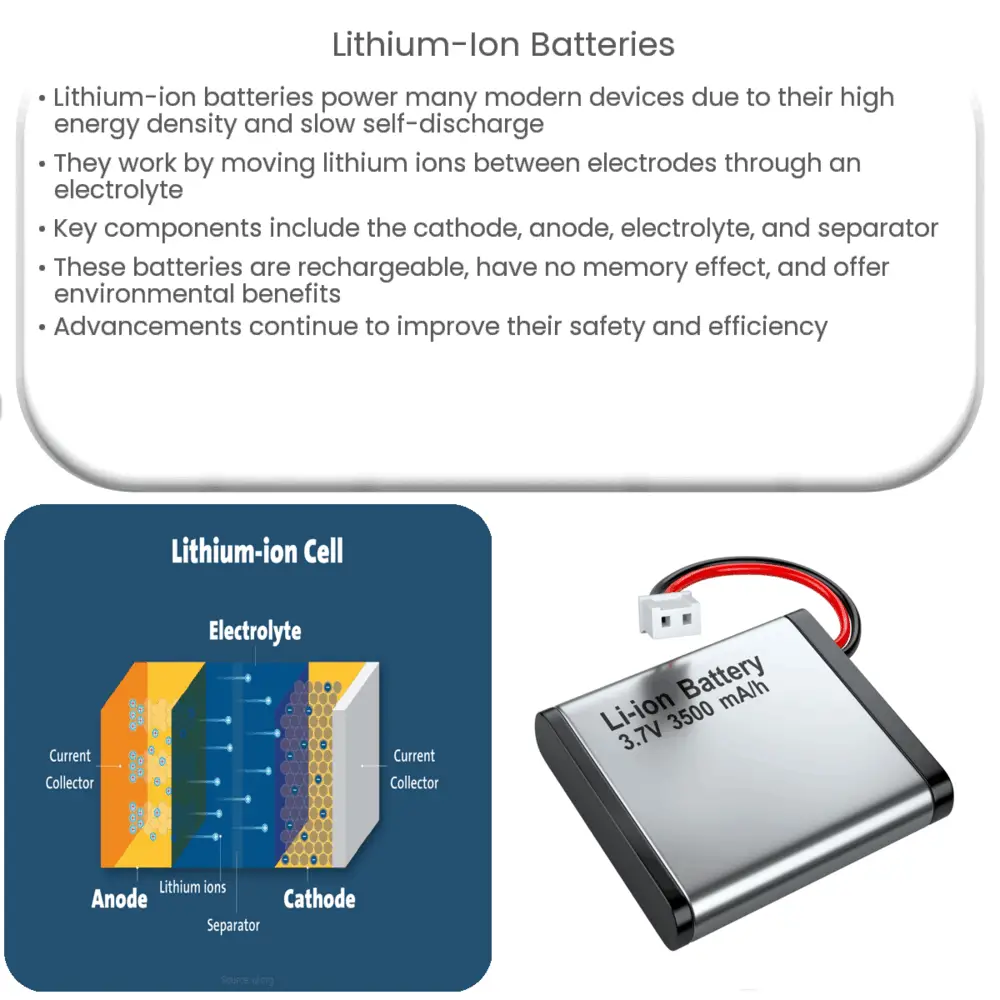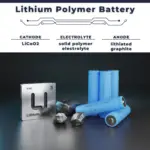Explore the workings, benefits, and future of lithium-ion batteries, the versatile power source driving modern electronics and EVs.

Lithium-ion Batteries: Powering Modern Life
At the heart of many of our modern-day devices, from smartphones to electric cars, are Lithium-ion batteries. These energy storage units have been integral in driving technological progress, thanks to their unique combination of high energy density, lack of memory effect, and slow self-discharge.
What are Lithium-ion Batteries?
Lithium-ion batteries, often abbreviated as Li-ion, are a type of rechargeable battery in which lithium ions move from the negative electrode through an electrolyte to the positive electrode during discharge, and back when charging.
Components of a Lithium-ion Battery
- Cathode: The cathode, or positive electrode, of a Li-ion battery is typically made from lithium cobalt oxide (LiCoO2) or similar lithium compounds.
- Anode: The anode, or negative electrode, is usually composed of carbon-based materials, most notably graphite.
- Electrolyte: The electrolyte provides the medium for lithium ions to move between the cathode and anode. It’s typically a mixture of organic carbonates.
- Separator: The separator, an insulating piece typically made from a thin polymer film, keeps the cathode and anode from coming into physical contact, preventing a potential short circuit.
How do Lithium-ion Batteries Work?
Understanding the working principle of a Li-ion battery is central to appreciating its unique characteristics. When the battery is being charged, lithium ions move from the cathode, through the electrolyte, and embed themselves in the anode. This process is known as intercalation. During discharge, these ions make the opposite journey, traveling from the anode to the cathode, generating an electric current that powers the connected device. This reversible process is what allows Li-ion batteries to be recharged and reused.
Advantages of Lithium-ion Batteries
Lithium-ion batteries come with a host of advantages that make them the preferred choice for many applications:
- High Energy Density: Li-ion batteries possess a high energy density, making them capable of storing more energy for their size than most other types.
- No Memory Effect: Unlike some rechargeable batteries, Li-ion batteries do not suffer from a “memory effect”, meaning they do not need to be fully discharged before recharging.
- Low Self-discharge: Compared to other rechargeable batteries, Li-ion batteries lose their charge at a much slower rate when not in use.
- Environmentally Friendly: As Li-ion batteries are rechargeable, they result in less waste compared to disposable batteries. They also do not contain harmful metals such as lead or cadmium.
Challenges and Future of Lithium-ion Batteries
Despite their many benefits, Li-ion batteries also face some challenges. Safety issues, particularly the risk of overheating and catching fire, have been a concern. Additionally, the sourcing of lithium and other raw materials can be environmentally impactful. Nonetheless, ongoing research and development are continually improving the safety, performance, and sustainability of Li-ion batteries.
Advancements in nanotechnology, for instance, are helping to increase energy density and charging speed. Additionally, researchers are exploring alternative materials and designs to further enhance safety and reduce environmental impact. As electric vehicles and renewable energy storage become more commonplace, the demand for more advanced, efficient, and safer Li-ion batteries is set to grow.
Conclusion
In conclusion, lithium-ion batteries are the powerhouse behind many of our everyday devices. With their high energy density, low self-discharge, and lack of memory effect, they have paved the way for portable electronics and electric vehicles. Despite facing challenges, the future of Li-ion batteries remains bright, with ongoing advancements promising to continue pushing the boundaries of what’s possible in energy storage technology.



